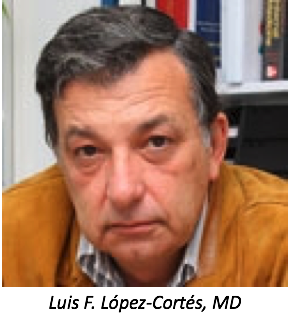HCV Eradication in HIV Patients Reduces Immune Activation, HIV DNA
Eradication of HCV in patients with HIV results in reduction of CD4+ and CD8+ T cell immune activation.

In patients with HIV and a coinfection with hepatitis C virus (HCV), eradication of the HCV results in decreases in CD4+ and CD8+ T cell immune activation as well as significant reductions in proviral HIV DNA, plasma soluble CD14 (sCD14), D-dimers, and microbial translocation markers.
“Although there were not quantitative correlations between the decrease in proviral HIV DNA load and the expression of HLA-DR and CD38 on both CD4+ and CD8+ T cells, it might be hypothesized that both events might be related,” the researchers, led by Luis F. López-Cortés, MD, of the Ibis- Biomedicine Institute of Sevilla in Sevilla, Spain, reported. “Almost certainly, a large proportion of this benefit is due to the reduction in the level of immune activation, given its key role in driving HIV-1 disease and non—AIDS-defining events in this population.”
Patients with HIV and HCV who were being treated with antiretroviral treatment and who had maintained undetectable HIV RNA and achieved a sustained virologic response with interferon-free HCV therapy were enrolled (n = 97) in the study. The primary endpoint was comprised of the change in immune activation, as quantified by changes in expressions of HLA-DR and CD38 in CD4+ and CD8+ T cells at 1 month following anti-HCV treatment.
Additional biomarkers assessed at baseline, during, and after anti-HCV therapy included PD-1 and CD57 in CD4+ and CD8+ T cells, monocytes-macrophages activation, soluble markers of inflammation and microbial translocation, interleukin 6 (IL-6), lipopolysaccharide (LPS), high-sensitivity C-reactive protein (hsCRP), sCD14, and proviral HIV DNA levels in peripheral blood mononuclear cells (PBMCs).
Compared with baseline, there were significant reductions in HLA-DR and CD38 expression in CD4+ and CD8+ T cells at the end of treatment (2.4 [0.3-16.7] vs 0.5 [0.1-3.1], respectively) and 1 month after treatment (2.4 [0.3-16.7] vs 0.7 [0.1-3.0], respectively) (P <.001). Additionally, the investigators observed reductions in HIV DNA load from baseline to 1-month follow-up (3.16 copies/106 PBMCs [0.41-7.57] vs 2.27 copies/106 PBMCs [0.24-5.66], respectively; P <.001). Levels of D-dimers also decreased from baseline to follow-up (0.53 μg/mL [0.01-5.63] vs 0.15 μg/mL [0.01-4.80], respectively; P <.001) as did levels of sCD14 (4649 pg/mL [106-67010] vs 2769 pg/mL (12-42516); P <.001) and LPS (50.1 pg/mL [11.0-96.0] vs 44.2 [5.0-63.0]; P <.001).
There were no significant changes in PD-1 and CD57 expression in CD4+ T cells (PD-1: 1.9 [0.2-12.9] vs 2.0 [0.5-10.4], P =.478; CD57: 2.1 [0.1-19.1] vs 1.9 [0.1-16.4], P =.464) and CD8+ T cells (PD-1: 1.9 [0.6-11.9] vs 2.1 [0.1-12.4], P =.218; CD57: 11.6 [0.3-41.0] vs 12.5 [0.6-30.0], P =.843), IL-6 (6.34 pg/mL [2.46-53.16] vs 5.63 [2.35-27.48]; P =.573), or hsCRP (2.25 mg/L [1.85-8.25] vs 2.30 mg/L [1.75-7.85]; P =.611) from baseline to 1-month follow-up. In addition, the researchers found no increases in the CD4+ T-cell count or CD4+ T-cell count to the CD8+ T-cell count ratio following improvements in levels of proviral HIV DNA and immune activation and microbial translocation markers.
Considering the study had a follow-up of only 1 month after HCV treatment, the results may require replication in longer-term analyses to determine the longitudinal effects of HCV eradication in HIV patients.
According to the study authors, the findings support “the use of HCV treatment in all HIV/HCV-coinfected patients regardless of fibrosis stage, with the sole exception of decompensated cirrhosis.”
